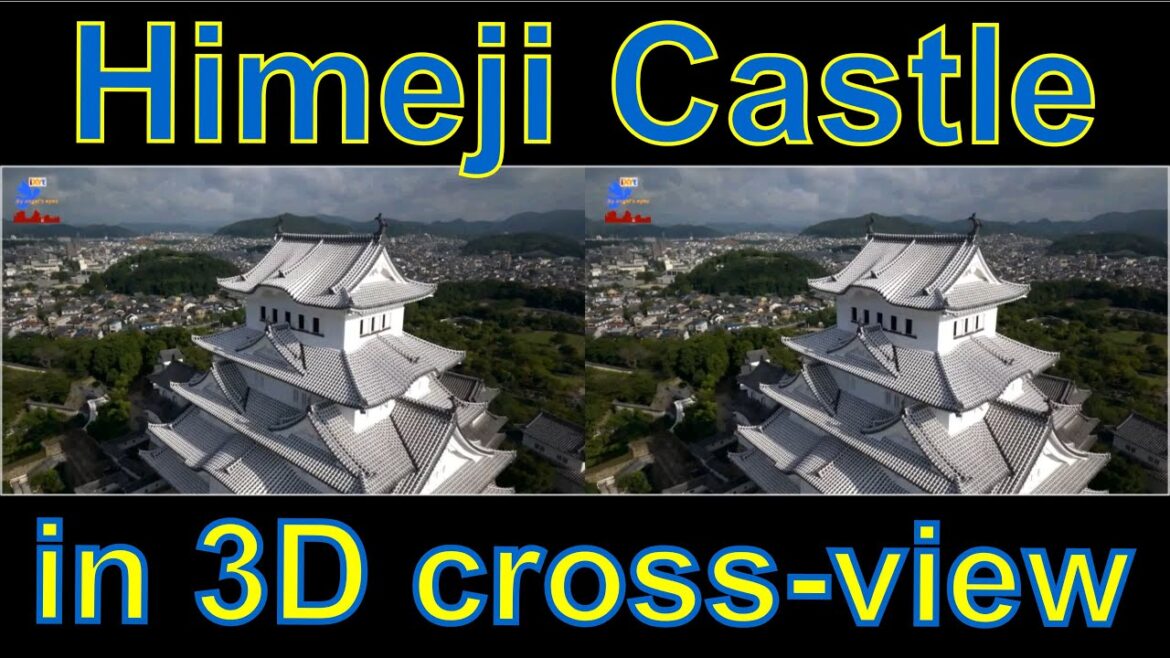Himeji Castle “by angel’s eyes – iXYt” side-by-side cross-view , the 2D origin for 3D transformation was taken from https://www.youtube.com/watch?v=nOrRjmxUU_U (thanks to Sony | Camera Channel).
The red-blue anaglyph where 3D can be seen with red-blue glasses and some color distortions is in the neighboring playlist at https://youtu.be/hnMXE0x_7_I.
Your drone videos shot in the same manner I also can transfer them in 3D if any. For details visit https://syla.top/by-angels-eyes/.
“By angel’s eyes – iXYt” (patent pending) is a method of writing 3D videos for VR (or more precisely TR, transferred reality – more natural looking than common “plastic” VR, but never seen by naked eyes).
ixyt.info is a worldwide affiche-map-calendar and our sponsor partner
Be my patron – https://www.patreon.com/anatlaz
Contacts: Telegram or Viber +38 099 437 24536
Do you like this kind of virtual reality (VR) or more precisely – TR? Please do not hesitate to comment and/or propose new places/objects you want to see “By angel’s eyes – iXYt”!
Wikipedia describes it as follows:
“Himeji Castle (姫路城, Himeji-jō) is a hilltop Japanese castle complex situated in the city of Himeji which is located in the Hyōgo Prefecture of Japan. The castle is regarded as the finest surviving example of prototypical Japanese castle architecture, comprising a network of 83 rooms with advanced defensive systems from the feudal period. The castle is frequently known as Hakuro-jō or Shirasagi-jō (“White Egret Castle” or “White Heron Castle”) because of its brilliant white exterior and supposed resemblance to a bird taking flight.
Himeji Castle dates to 1333 when Akamatsu Norimura built a fort on top of Himeyama hill. The fort was dismantled and rebuilt as Himeyama Castle in 1346 and then remodeled into Himeji Castle two centuries later. Himeji Castle was then significantly remodeled in 1581 by Toyotomi Hideyoshi, who added a three-story castle keep. In 1600, Tokugawa Ieyasu awarded the castle to Ikeda Terumasa for his help in the Battle of Sekigahara, and Ikeda completely rebuilt the castle from 1601 to 1609, expanding it into a large castle complex. Several buildings were later added to the castle complex by Honda Tadamasa from 1617 to 1618.
For almost 700 years, Himeji Castle has remained intact, even throughout the bombing of Himeji in World War II, and natural disasters including the 1995 Great Hanshin earthquake.
Himeji Castle is the largest and most visited castle in Japan, and it was registered in 1993 as one of the first UNESCO World Heritage Sites in the country. The area within the middle moat of the castle complex is a designated Special Historic Site and five structures of the castle are also designated National Treasures. Along with Matsumoto Castle and Kumamoto Castle, Himeji Castle is considered one of Japan’s three premier castles. In order to preserve the castle buildings, it underwent restoration work for several years and reopened to the public on March 27, 2015. The works also removed decades of dirt and grime, restoring the formerly grey roof to its original brilliant white color.
History
Himeji Castle’s construction dates to 1333, when a fort was constructed on Himeyama hill by Akamatsu Norimura, the ruler of the ancient Harima Province.[3] In 1346, his son Sadanori demolished this fort and built Himeyama Castle in its place. In 1545, the Kuroda clan was stationed here by order of the Kodera clan, and feudal ruler Kuroda Shigetaka remodeled the castle into Himeji Castle, completing the work in 1561. In 1580, Kuroda Yoshitaka presented the castle to Toyotomi Hideyoshi, and in 1581 Hideyoshi significantly remodeled the castle, building a three-story keep with an area of about 55 m2 (590 sq ft).
…”
Для створення ефекту 3D у цьому випадку «неозброєним оком» доведеться докласти певних зусиль. Тримаючи голову прямо перед «подвійною» картинкою, неспішно переводьте погляд на кінчик носа. У цьому процесі зображення почнуть зближуватися, наповзаючи одне на одне у просторі між ними. Вам потрібно зловити ступінь скосу, при якому комбіноване зображення набуває глибини і різкості, помістившись рівно посередині – і зберегти її. Вікіпедія рекомендує поміщати кінчик пальця трохи нижче від поділу між двома зображеннями, щоб полегшити «злиття», а потім повільно наближати палець до очей, не відриваючи погляду від кінчика; на певній відстані об’єднане 3D-зображення має “зависнути” прямо над пальцем. Пропоную творцям дрон-відео безкоштовну конвертацію у 3D відео (якщо це великі мальовничі об’єкти) для подальшої спільної експлуатації. Деталі за адресою https://syla.top/by-angels-eyes/UKR/

